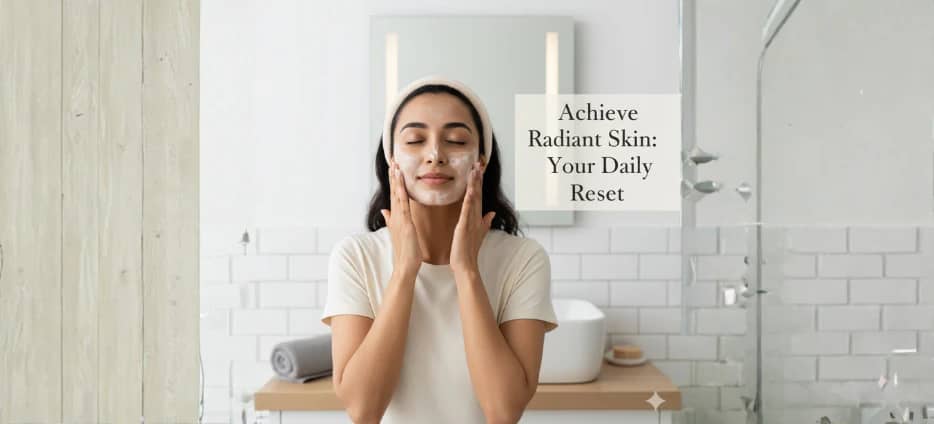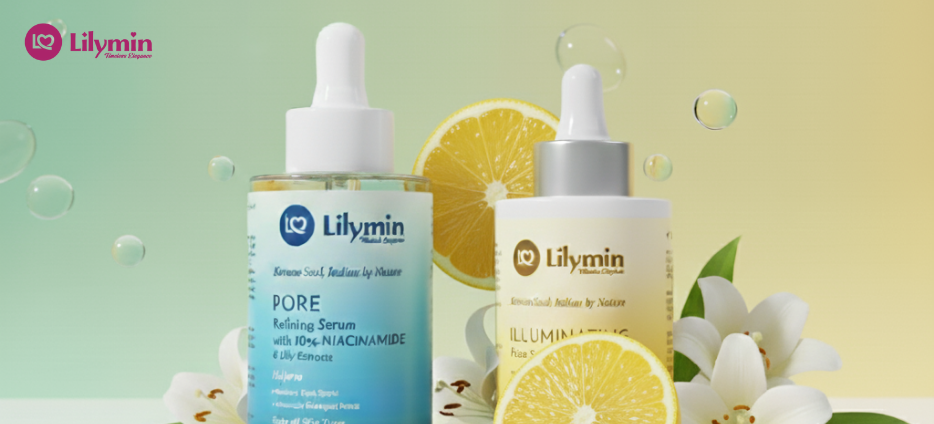
Dark spots, also known as hyperpigmentation, are a common skin problem affecting people of all ages. They can be caused by sun exposure, hormonal changes, acne scars, or aging. With the availability of effective dark spots removal cream in India, achieving clear, radiant skin has become easier than ever. In this blog, we'll explore everything you need to know about dark spots removal cream, including top recommendations and tips on choosing the best cream for your needs.
Different Types of Dark Spots
Age Spots (Solar Lentigines): These are flat, brown spots that appear after years of sun exposure. They are most common in people over 40 but can appear earlier if you've spent a lot of time in the sun.
Post-Inflammatory Hyperpigmentation (PIH): These dark marks appear after the healing of acne, cuts, burns, or any skin injury. Without proper treatment, they can last for months or even years.
Melasma: These large, brown or gray patches typically appear on the cheeks, forehead, nose, and upper lip. Melasma primarily affects women due to hormonal changes caused by pregnancy or birth control pills.
The Science Behind Dark Spots: Why Do They Appear?
Understanding why dark spots form helps you effectively prevent and treat them. Let's understand the main causes:
1. Sun Exposure
Sun exposure is responsible for 90% of all dark spots. When UV rays hit your skin, your body produces extra melanin (the pigment that gives skin its color) to protect itself. This is why you get a tan. However, with repeated sun exposure, melanin production becomes uneven, leading to the formation of dark spots.
2. Acne and Pimples
When you have a pimple, your skin becomes inflamed. This inflammation triggers extra melanin production in that specific area. Even after the pimple heals, a dark mark remains. Picking or squeezing pimples makes it worse because it causes more inflammation and further damage to the skin.
3. Aging
As you age, the speed of your skin cell turnover slows down. Young skin renews itself every 28 days, but older skin can take 40-50 days. This means that dark spots linger for longer.
Additionally, sun damage accumulated over the years begins to show up as age spots.
4. Hormonal Changes
Hormones play a huge role in skin pigmentation. Common hormonal causes include:
- Pregnancy (often referred to as the mask of pregnancy)
- Birth control pills
- Hormone replacement therapy
- Thyroid problems
- Menopause
Women are more affected by hormonal dark spots than men. These spots can be stubborn and require consistent treatment.
5. Medications and Medical Conditions
Some medications make the skin more sensitive to sunlight, leading to dark spots:
- Antibiotics
- Anti-inflammatory drugs
- Certain blood pressure medications
- Cancer treatments
Certain medical conditions, such as diabetes and autoimmune disorders, can also cause changes in skin pigmentation.
6. Genetics
If your parents or grandparents had dark spots, you may be more likely to have them too. Genetics determine how much melanin your skin produces and how it reacts to triggers like sunlight.
How Dark Spot Removal Cream Work
Dark spot removal creams are specifically formulated with active ingredients that target melanin production and skin cell turnover. Understanding how these cream work helps you use them more effectively and set the right expectations.
These creams change your skin in three ways:
Melanin Inhibition
The creams contain ingredients that slow down tyrosinase. Reduced melanin production means your skin stops producing as much dark pigment, preventing dark spots from becoming more visible.
Exfoliation and Cell Turnover
The active ingredients in the cream gently remove the top layers of darkened skin cells. As these cells are removed, fresh, lighter skin cells emerge from beneath.
Even Distribution
The cream helps distribute melanin more evenly across your skin's surface. This results in an even skin tone instead of dark spots.
In addition, many cream contain antioxidants that protect against future damage and brightening agents that improve your overall complexion.
The Best Dark Spot Removal Cream: Essential Ingredients
Not all dark spots removal cream is the same. The effect depends entirely on the active ingredients. Here's your detailed guide to the ingredients that have scientific backing and deliver real results:
Vitamin C: Brightening Powerhouse
Why it works: Vitamin C (ascorbic acid) is a powerful antioxidant that inhibits melanin production and lightens existing dark spots. It also protects your skin from free radical damage caused by UV rays and pollution.
- L-ascorbic acid (most potent form)
- 10-20% concentration
- Stable formulation in airtight packaging
- Combined with vitamin E for enhanced effectiveness
Products like Day Cream often include vitamin C as a key ingredient because it's proven effective in treating hyperpigmentation and providing anti-aging benefits.
Niacinamide: Niacinamide (vitamin B3) is extremely versatile. It reduces the transfer of melanin from pigment-producing cells to skin cells, lightening dark spots. It also strengthens your skin barrier and reduces inflammation.
Scientific evidence: Research shows that 5% niacinamide can reduce hyperpigmentation by 35–68% within 8 weeks.
- Can be combined with most other ingredients
- Perfect for twice-daily use
Who should use it: Perfect for beginners, sensitive skin, and those seeking a gentle yet effective treatment.
Kojic Acid: Nature's Lightening Agent, Kojic acid is derived from certain fungi (mushrooms). It works by blocking tyrosinase, an enzyme essential for melanin production. This prevents the formation of new pigment and helps lighten existing spots.
Dark Spots Removal Cream for Face
With so many options available, choosing the right dark spots removal cream for your face can seem daunting.
Identify Your Skin Type
- Shiny throughout the day
- Prone to acne and blackheads
- Dry or normal cheeks
Determine the Type of Dark Spots
- Sunspots: The Vitamin C + Kojic Acid combination works best.
- Acne Scars: The azelaic acid and niacinamide combination is best.
- Melasma: Tranexamic Acid + Vitamin C + Niacinamide (Triple Threat)
For Age Spots: A retinol and vitamin C combination helps with anti-aging as well as spot removal.
Check Product Quality Indicators
Proper Packaging: Dark bottles or opaque tubes protect light-sensitive ingredients.
- Clear Ingredient List
- Expiration Date
- Third-Party Testing
Using your dark spot removal cream correctly is just as important as choosing the right cream. Follow this detailed routine for maximum results:
Your Complete Morning Routine (7-8 minutes)
Start with clean hands. Wet your face with lukewarm water (not hot water heat can worsen pigmentation). Apply a gentle, pH-balanced cleanser.
Pat your face dry with a clean, soft towel (do not rub). Leave the skin slightly damp this helps the next products absorb better.
Applying Dark Spots Treatment (2 minutes)
Take a pea-sized amount of your dark spots removal cream.
Apply small dots directly onto each dark spots. If your product is designed for full-face application (like Day Cream), apply a thin layer all over your face.
Moisturizer
If your dark spots treatment isn't already moisturizing, apply a lightweight moisturizer now.
The moisturizer locks in your treatment and prevents dryness, which can worsen pigmentation.
Sunscreen Never Skip This (2 minutes)
This is the most important step in your entire routine. Without sunscreen, your dark spots treatment won't work period.
Apply an SPF 50 sunscreen. Use about a nickel-sized amount for your face and more for your neck and ears.
Apply 15 minutes before going outside (or even if you're indoors near windows).
Exfoliation (Only 2-3 times a week, 1 minute)
On exfoliation nights, use a gentle chemical exfoliant (AHA/BHA) or your dark spot cream if it contains exfoliating ingredients.
Apply a thin layer, avoiding the eye area. Don't rub vigorously let the ingredients do their job. If you experience any irritation or dryness on your skin, skip this step.
Dark Spot Treatment (2 minutes)
Apply your dark spots correcting cream to your face the same way you do in the morning.
- Nighttime is actually the best time for treatment because:
- Your skin repairs itself while you sleep.
- There's no worry about sun exposure.
- The active ingredients can work uninterrupted for 8 hours.
If you are using retinol or a stronger treatment, nighttime application is often recommended.
15 Effective Tips for Getting the Best Results from Dark Spot Removal Creams
- Regular use is your secret weapon
- Sunscreen is essential
- Patience: The timeline for results
- Hydration: Inside and out
- Never touch or scratch your fac
- Good sleep: Your skin's repair time
- Diet: Nourish your skin from within
- Keep your routine simple
- Always patch test new products
- Don't mix incompatible ingredients
- Store products correctly
- Take progress pictures
- Manage stress
- Avoid heat and friction.
- Be gentle when applying
Common Mistakes That Can Ruin Your Dark Spot Treatment
Using too much product
More products don't mean faster results. It can irritate the skin and waste the product.
Giving up too soon
Most people give up after 3-4 weeks when they don't see significant changes.
The reality: Dark spots take at least 8-12 weeks to lighten. The first visible changes appear around 6-8 weeks.
Irregular application
Using your dark spot removal cream irregularly sometimes twice a day, sometimes skipping a few days – confuses your skin.
Not using sunscreen or inadequate sunscreen
- Using SPF 15 instead of SPF 30+
- Not reapplying
- Skipping it on cloudy days
- Not using enough (most people only use about 25% of the required amount)
Aloe Vera: Nature's Healing Gel
Why it works: It contains aloin, a natural compound that lightens hyperpigmentation. It's also very soothing and healing.


